Browse Houses
Search Results: Returned 5516 records. Displaying results 5001 – 5100
| House name | Description | |
|---|---|---|
| St. John's | This house was built later in the nineteenth century. It appears as "St. John's" on the 25-inch Ordnance Survey Map of the 1890s. The Corbishley family occupied St. John's until the early twentieth century when an auction was held on the premises. The property was purchased by the Finn family but members of the Corbishley family remained living in the house for some years afterwards. St. John's remained the property of the Finn family until later in the twentieth century. In 2005 it was sold. Extensive works have since been carried out at the entrance including new gates and railings. | |
| St. Johns/Roseville (Inishowen) | William Scott was leasing this property from the Norman estate at the time of Griffiths Valuation in the 1850s, when it was valued at over £11. Lewis referred to it as the seat of Miss Schoales in 1837. It is labelled Roseville on the 1st edition Ordnance Survey map but as St. Johns on the later editions. In the early 2020s it housed a restaurant known as the Red Door. | |
| St. Michael's/ Moneyteige | The house at St. Michael's is described in the Landed Estates court notice in April 1885 as "a handsome modern residence which cost £2000 to build". At the time of Griffith's Valuation, Edmund Davies held the townland of Moneyteige including a house valued at £2. Writing in 1976, Kelly noted that the house was built by a doctor named Davis, who bought the townland from the Lamberts of Castle Ellen. Part of the building is now roofless. | |
| St. Olan's | Rev. William Welland was leasing the property from William Crooke at the time of Griffith's Valuation when it was valued at over £20. It is labelled St. Olan's Rectory on the First Edition Ordnance Survey map and as St.Olan's on the 25-inch edition of the 1890s. In the early 1940s the Irish Tourist Association survey reported that it was occupied by Mr. Devlin, area engineer. The house is still extant and occupied. | |
| Stagdale Lodge | A Massy house occupied by members of the Massy family from the late 18th century. It was the home of Hugh Massy, a younger brother of George Massy of Glenwilliam Castle, at the beginning of the 19th century. Held by W. Massy in 1837, Lewis records the "fine avenue of stately beech trees". William Massy was still resident at the time of Grifffith's Valuation holding the property from Hugh Massy. In 1906 occupied by Hugh H.G. Massy and valued at £30.10 shillings. | |
| Stamer Park | A home of the Stamer family in the 18th century which was occupied by Daniel Finucane, Secretary to the Clare Grand Jury, by the beginning of the 19th century. Daniel's son Michael was resident in 1837. By 1860 Captain William Stacpoole who was elected Member of Parliament for Ennis was living in the house. The house is still extant. |
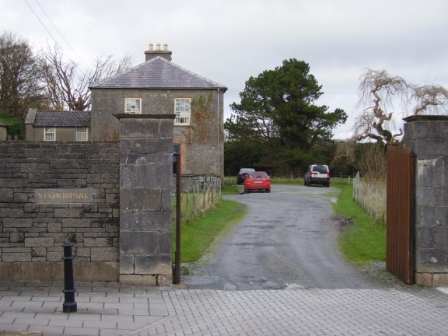
|
| Stannard's Grove | Located on the Cotter estate, this house was occupied by the Stannard family at the end of the 18th century. It was later occupied by the Adams and Smith families. Lewis records it as unoccupied and at the time of Griffith's Valuation it was held in fee by Edward Cotter. The home of William Stackpool at the beginning of the 20th century. Hajba writes that the house was reconstructed in 1924 after been blown up in 1921 by the British Crown Forces. In 1942 the Irish Tourist Association Survey noted that it had, since 1934, been owned by the Herlihy family. It is still extant. |

|
| Still View House (Cottage) | Robert Allman was leasing this property from the Earl of Shannon's estate at the time of Griffith's Valuation, when it was valued at £17 and had a mill adjacent. It is labelled Still View Cottage on the 1st edition Ordnance Survey map but an enlarged property at the site has become known as Still View House by the 1890s. A house still exists at the site. Allman was also leasing a mill, described as a flour mill on the 1st edition map. This site had expanded into an extensive woollen mill by the 1890s. Extensive industrial buildings still remain at the site. | |
| Stone Hall | John Allen was leasing this property to Phillip Somerville in 1851 when it was valued at £26. Noted by Lewis as the seat of Maj. J. Allen in 1837. The house is still extant and occupied. |

|
| Stonebrook [Stafford] Lodge | At the time of Griffith's Valuation, Stafford Lodge was leased by Mrs. Mary Stafford from the Barron estate. It was valued at £15 10s. In the 1870s the representatives of William Stafford of Stafford Lodge owned over 250 acres in the county. On the 25-inch Ordnance Survey map of the 1890s the house is named Stonebrook Lodge. There is still a house at the site. | |
| Stonehall | A house built 1803 and situated on the Waller estate in the mid 19th century and occupied by the Langford family from at least the early 19th century. This house is still extant and occupied and the property includes an open farm. |

|
| Stonehall | The home of the O'Briens, later Stafford O'Briens, at the beginning of the 18th century and later in the possession of the Fitzgeralds. By the beginning of the 19th century the house was in the hands of the McMahon family. At the time of Griffith's Valuation James McMahon was leasing Stonehall from the Stafford O'Briens, it was valued at less than £3. Later the home of the Whites who intermarried with the McMahons. It is no longer extant. | |
| Stonehill House | Henry Busteed was leasing Stonehill House from William B. Warren and others at the time of Griffith's Valuation, when it was valued at £11 10s. A smaller house in the same townland, also owned by Warren and known as Maryville [W725608], was valued at £8. It was occupied by Robert Condron at that time. Neither of these houses are extant now. | |
| Stonehouse | In 1814 Leet records Stonehouse as the residence of Patrick Duckett. This may be the same property leased by Joseph Power from Osborne Boyce at the time of Grifith's Valuation and valued at £9. The original property does not appear to be extant. | |
| Stoneleigh | The house in Laghtphillip townland, part of the Lynch estate, was leased to James Stanley in 1855. In 1906 the house was owned by Hugh Greaney and was valued at almost £7. The house is still standing but derelict. A new house exists on the site and "Stoneleigh House" appears at the entrance gate. Writing in 1976, Kelly noted that the house was built by the Stanley family due to its salubrious site. |

|
| Stoneville | Originally a hunting lodge of the Southwell family, this house was the home of the Massy family for two centuries. In 1786 Wilson refers to it as the seat of Hugh Massey. A new front was added in 1802 by Hugh Massy. The buildings were valued at £12 in the mid 19th century and the property was located on the Southwell estate. It is still extant. |

|
| Stonewold | Edward Allingham was leasing a property at Ballyhanna from the Conolly estate at the time of Griffiths Valuation when it was valued at £20. It is labelled on both the 1st and 25-inch edition Ordnance Survey maps as Stone Wold. It was later associated with the Crawford family. Stone Wold was one of a number of properties demolished in the mid-1940s when several townlands were inundated as part of the Erne Hydro-Electric scheme. | |
| Stonewold | Edward Allingham was leasing a property at Ballyhanna from the Conolly estate at the time of Griffiths Valuation when it was valued at £20. It is labelled on both the 1st and 25-inch edition Ordnance Survey maps as Stone Wold. This house was recorded as the address of Johnston Teevan, solicitor, at the time of his death in 1872. It was one of a number of properties demolished in the mid-1940s when several townlands were inundated as part of the Erne Hydro-Electric scheme. | |
| Stormont | Storm-mount was the residence of John Cuffe Kelly esq in 1814 and of Mrs Kelly in 1837. Mrs Kelly was a sister of Francis Drew of Drewscourt. By the time of Griffith's Valuation it was occupied by Joseph Walplate who held it from Sir Richard De Burgho. The buildings were valued at £19+. A house is still extant at this location. In 2022 it was offered for sale. | |
| Stradbally | Griffith's Valuation shows that Christopher St.George had what are described as "offices" valued at £16 in the townland of Stradbally West, parish of Stradbally, barony of Dunkellin. This was the stable complex for Tyrone House and adjacent to the walled garden which was part of the estate. |

|
| Stradbally Rectory | Rev. George T. Roche was leasing this property from the Uniacke estate at the time of Griffith's Valuation, when it was valued at £20. The house is still extant. |
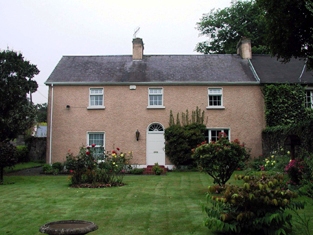
|
| Stradone | According to Burke’s Irish Family Records the Burrowes family were resident at Stradone from at least the mid-18th century. The architect J.B. Keane designed the 19th century house for Major Thomas Burrowes in 1828. His son Robert Burrowes was the owner and occupant in the 1850s when the rateable valuation was recorded as £67.10.0. The Burrowes were still in possession of Stradone in the early 20th century until it was burnt in June 1921. The stables and a gate lodge survive. |
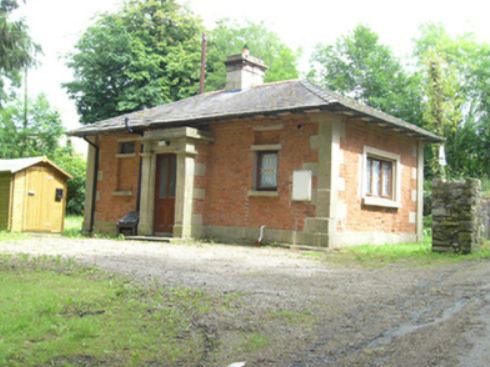
|
| Straduff Lodge | Patrick Martin was leasing a property valued at £3 from the Keogh estate at Straduff, parish of Kilmactranny, at the time of Griffith's Valuation. This property appears on the 1st edition OS map as Straduff Lodge. It is no longer extant. | |
| Stranagappoge (Inishowen) | Robert Kilpatrick was leasing this property from the Alexander estate at the time of Griffith’s Valuation, in the 1850s, when it was valued at £10 10s. It is labelled Stranagapple Demesne on the 1st edition Ordnance Survey map of the 1830s but as Stranagappoge on the 25-inch edition of the early 20th century. The original buildings at the site seem to have been replaced. | |
| Strancally Castle | John Keily held Strancally Castle in fee at the time of Griffith's Valuation, when it was valued at £61. Lewis refers to it as "a modern castle, seat of J. Keily" in 1837. There is a lithograph and extensive description of the castle and demesne in the sale notice of 1856. After this the castle came into the ownership of the Whitelock Lloyd family. In 1906 it owned by George W. Lloyd and valued at over £63. The 1943 ITA Survey provides a detailed description of the house from that time including the art collection and library. It is still extant and has been renovated in recent years. An extensive farmyard, valued at £37 in 1851, is located in Kilmanicholas townland at X078903. This property was valued at over £40 in 1906. |
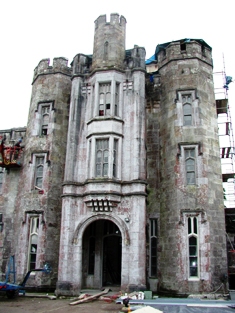
|
| Strand House | Strand House appears to be the house also known as "Stonetown House" and marked as such on the first Ordnance Survey map. The Ordnance Survey Name Book describes Stonetown House as the seat of Daniel Gabbett and that it was built between 1760 and 1770 by G. Vandeleur at a cost of £1,100. At the time of Griffith's Valuation it was the residence of William Gabbett, valued at £44 and held from Elizabeth Vereker. Part of the original garden now occupied by The Strand Hotel. | |
| Strandhill | A 2 storey thatched house on the shore of Lough Corrib and situated opposite Ashford Castle, home of the Elwood family. In the late 18th century it was let to the Ireland family and in the mid 19th century to the Lynchs of Ballycurrin. The house was used as the home of the Widow Tolan in the film 'The Quiet Man' made in 1951 and was knocked down in the 1970s. It is associated with the recorder of Japanese folklore, Lafcadio Hearn, who spent a childhood holiday at Strandhill with his aunt Mrs Elwood. |

|
| Strandhill | At the time of Griffith's Valuation Patrick Buchan was leasing a property valued at £12 at Lecarrow or Strandhill, barony of Dromahaire, from James Fawcett. Lewis records Strand Hill as a seat of the Fawcett family in 1837. | |
| Strandhill House | At the time of Griffith's Valuation George D. Meredith was leasing Strandhill House, valued at £9, from the estate of William Phibbs. McTernan states that the house remained in the Meredith family until the 1960s. It is now a roofless ruin. | |
| Streamhill | A Crofts residence in the 18th century and in the first half of the 19th century. At the time of Griffith's Valuation it was occupied by George Crofts who held the property from Viscount Doneraile with 1619 acres. The buildings were valued at £12. Hajba writes that Edward Cavanagh Murphy built the present house in the mid 1850s. The 1890s sale notice contains a detailed description. It was sold to Langley Brasier Creagh in 1890 who made some alterations. Uninhabited at the beginning of the 21st century. |

|
| Streamsford | The house at Streamsford, parish of Killimordaly, was leased from James O'Hara to Patrick Cogovan.and valued at £10 at the time of Griffith's Valuation. It is still extant and occupied. |
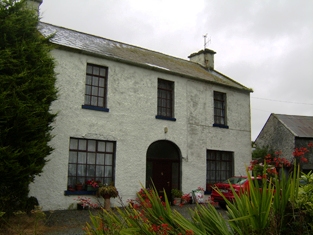
|
| Streamstown | William Coghlan was living at Streamstown, near Claremorris, in 1814. In the 1830s the townland is noted as belonging to Mr. Gonne Bell of Farmhill, Claremorris. By the time of Griffith's Valuation there is no house with a significant valuation in the townland. | |
| Streamstown | The property of the Coneys family since the early 19th century, though sometimes leased to others. It was occupied by James McCreight at the time of Griffith's Valuation, when it was valued at £14. It is still extant and occupied. |
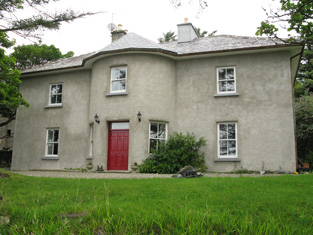
|
| Streamstown | Streamstown House was an important seat of the Irwin family in the eighteenth century. McTernan writes that it was a centre of gaiety and music and enjoyed visits from the well known harper, Arthur O'Neill. In 1786 Wilson refers to it as the seat of "Mr. Irvine". From the early nineteenth century, however, the family tended to reside elsewhere and Streamstown was usually occupied by a steward or herdsman, At the time of Griffith's Valuation, Henry Irwin was in possession of the property at Streamstown, which consisted of a herd's house and a gatehouse. It was valued at almost £2. In 1894 Slater still refers to it as a residence of Burton Irwin. Only one gable and a chimney of the house remain. | |
| Streamstown House(Tynagh) | Michael McDermott was the occupier of Streamstown House at the time of Griffith's Valuation when it was valued at £12. In 1783 Taylor and Skinner recorded a house at Ballindrimney as the seat of the Lambert family. The house is still standing but derelict. |

|
| Streedagh | It is likely that Thomas Jones built a house at Streedagh c 1725. However, the present house dates from the early years of the nineteenth century. In 1906 it was the property of Richard W. Jones and was valued at £18. It is still extant and occupied. |

|
| Strokestown House | Late 17th century house altered in the early 19th century and home of the Mahon family for three centuries. In 1786 Wilson described it as "fine mansion house with ample and beautiful demesne". Referred to as "Bawn House", the mansion of Lord Hartland, by Lewis in 1837. Valued at £70 in the mid 19th century. Now a major tourist attraction containing the Famine Museum. http://www.strokestownpark.ie/ |

|
| Stumphill | This house was the home of William Mc O'Boy in the first half of the 19th century. The house was valued at £25 at the time of Griffith's Valuation and held from Henry Newenham. |
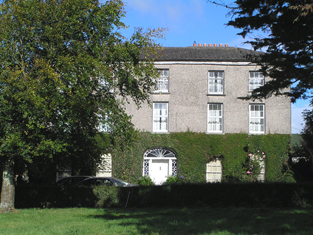
|
| Subulter | Leased at the end of the 18th century to James Leahy by the Lloyds. Occupied by John Leahy in 1837 and by Richard Leahy in the early 1850s who held the house valued at £18+ from Thomas Lloyd. Later owned by the Warrens of Codrum House. A new house now stands on the site. | |
| Sugarloaf | John Gumley of Sugarloaf died in 1794 (gravestone inscription Belturbet COI). Sugarloaf was located south east of Belturbet. In 1835 Theophilus Brinsley Butler of Dublin leased the house and gardens to Mary Finlay of Sugarloaf house, county Cavan, widow, for the lives of her son Sir Thomas Finlay and her daughter Elizabeth Lake Finlay. By the 1850s Samuel Knipe was resident holding the property from Captain Humphry Butler. It had a rateable valuation of £10.10.0. |

|
| Suir Castle House | Suir Castle was the home of a branch of the Massy family in the latter part of the 18th century. Two buildings are marked on the first edition Ordnance Survey map Suir Castle and Suir Castle House. The Inventory of National Architectural Heritage dates the house from circa 1820. Suir Castle [Grid Ref. S004 352] was occupied by Joseph Robbins in 1814 and in 1837. In the mid 19th century Suir Castle House was held by Francis Massey in fee and the buildings were valued at £21. The Massys were still resident in the 1870s. Occupied in the 20th century by Major Harold O'Malley. For sale in 2003. |

|
| Suir Mount | The representatives of James Fitzpatrick were leasing this property to John Egan in 1850 when it was valued at £13 11s. The house was included in the sale of the estate in May 1850 when it was described as " a good substantial dwelling house". | |
| Suirville | This house was the home of Peter Smithwick in the early 19th century. Suirville was held by Richard Butler from Michael Gavin at the time of Griffith's Valuation and the house, valued at £10, was occupied by Miss Alice O'Connor. The sale rental of 1873 shows William Roche as tenant, trustee for Mr Butler. The Irish Tourist Association Survey records Suirville as the birthplace of Sir William Butler in 1838. The house was a ruin in the early 1940s. | |
| Summer Hill | ||
| Summer Hill (Inishowen) | A house labelled Summer Hill appears in Carrownaff townland on the 1st edition Ordnance Survey map. Reverend Stewart Marks occupied a house at Carrownaff at the time of Griffiths Valuation, which was valued at £11. | |
| Summer Lodge | Part of the Studdert estate held from the Marquis of Conyngham, the buildings were valued at £12+ at the time of Griffith's Valuation and the house was in the occupation of Jonas Studdert. A house still exists at the site. | |
| Summer Ville | Griffith's Valuation records that the house valued at £3 was leased to James Foley by James R. Dunne. It is labelled Summer Ville on both the 1st and 25-inch edition Ordnance Survey maps. A new house appears to have been constructed at the site in the last decade. | |
| Summerfield | John Hall held a house valued at £15 and 175 acres in fee at Summerfield in the early 1850s. No house of this size is marked on the first Ordnance Survey Map for this townland. Grid Reference is approximate. | |
| Summerhill | Originally a Stawell home, Wilson refers to Summer-Hill as the seat of Mr. Stawell in 1786. It was occupied by John Stawell in the early 1850s and held from John Guinness. The buildings were valued at £18.10 shillings. Sold in 1853 to Major General Usher Williamson. The house remained in Williamson possession until the 20th century. The Irish Tourist Association Survey in 1942 recorded that it had been purchased and was resided in, by the Buckley family at that time. It is still a family residence. |
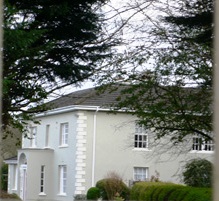
|
| Summerhill | A large 18th century house close to the River Shannon on the Massy estate. Occupied by the Reverend Charles Massey in 1814, Hugh Dillon Massy in 1837 and by Berkeley Vincent in the mid 19th century, when it was valued at £35. It remained the home of this branch of the Vincent family until the early 20th century. The Irish Tourist Association survey of 1942 refers to the demolition of this house "a few years ago". | |
| Summerhill | Richard Bourke was resident at Summer-hill, Burris-o-leagh, in 1814 but by 1837 J.H. Harden was the proprietor. At the time of Griffith's Valuation Charles F. Harden held the house, valued at £11, from John H. Harden. Buildings are still extant at this site. | |
| Summerhill | Summer-hill, Clonmel, was the residence of the Reverend George Mills (sic) in 1814. The house was valued at £15+ in the mid 19th century, occupied by Mrs Dorothea Moore and held from the representatives of the Reverend Miles. In the 1870s Dorothea Moore of Dublin owned 288 acres and Henry Moore of Summerhill, Clonmel owned 247 acres in county Tipperary. Lewis refers to the handsome residence of R. Moore in 1837. |

|
| Summerhill | The house in the townland of Cartown, property of George Church, is described as "unfinished" in Griffith's Valuation. | |
| Summerhill | An 18th century house, home of the Palmer family. Wilson refers to it as the seat of Thomas Palmer in 1786. Blake records that it was leased to John Bourke at the time of the 1798 rebellion. At the time of Griffith's Valuation, it was occupied by Thomas Palmer, leasing from Ernest Knox, and valued at £15. Later sold by the Palmers to the McCormack family who owned it until the 1920s. it is now a ruin. |

|
| Summerhill (Bandon) | A house built after the publication of the first Ordnance Survey. At the time of Griffith's Valuation, Mrs. Eliza Baldwin was leasing a property at Knockbrogan from the representatives of J. Lovell. It was then valued at £8. Summerhill House is still extant. |
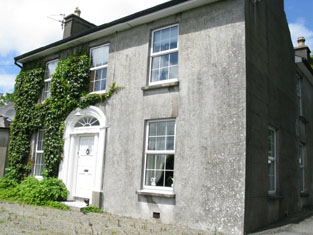
|
| Summerhill (Carbury) | At the time of Griffith's Valuation, John Gowan was leasing a house valued at £6 at Lisnalurg, from the Wynne estate. This is the house known as Summerhill which, in the 1870s, was acquired by the Anderson family who remained in possession until 1922. It is still extant. | |
| Summerhill (Mount Meredith) | In 1786 Wilson refers to Mount Meredith as a gentleman's seat close to Killarney. Bary writes that this is the property that later became known as Summerhill, held by The O’Donoghue. The Ordnance Survey Name Books note that this townland was leased by St. John Mason to Richard McGillycuddy and Madam O'Donoghue in the 1830s. The house is described as "formerly a handsome house but is now suffering to go to ruin". At the time of Griffith’s Valuation it was valued at £3 and leased to James Donovan. A substantial modern farm exists at the site now. | |
| Summerhill (Raphoe South) | James Johnston was leasing this property from the Conyngham estate at the time of Griffiths Valuaiton in the 1850s, when it was valued at £20. It is now a ruin. | |
| Summerhill House | Built on the Marquess of Conyngham's estate by the time of the first Ordnance Survey, this house valued at £10 was occupied by John Frost in the mid 19th century and it continued to be the home of the Frosts until the 1970s. A substantial farm still exists at the site. | |
| Summerhill House (Kilmaine) | The residence of Parsons Persse, agent to Lord Clanmorris, at the time of Griffith's Valuation when the house was valued at £8. Summerhill no longer exists but the yard buildings still remain. |

|
| Summerhill House (Loughrea) | In 1786 Wilson writes that Summerhill House, on the outskirts of Loughrea, was the seat of Mr. Persse. By the time of Griffith's Valuation in the 1850s, the property was occupied by Henry Dolpin, leasing from the Clanricarde estate, when it was valued at almost £8. Parts of the building have disappeared by the 1890s and the site is now part of a school. | |
| Summerland | Leased by the Corporation of Waterford to Samuel Strangeman in 1850 when it was valued at almost £40. A building is still extant at the site. | |
| Summerville | In 1840 the Ordnance Survey Name Books describe Summerville as "a commodious dwelling house, the residence of O'Brien Dillon" but Major Laurence is noted as the proprietor. At the time of Griffith's Valuation, the house was occupied by the representatives of Wills Bennett and held from John Bennett. The buildings were valued at £24. This house no longer exists. | |
| Summerville | Described by Lewis as an ancient seat of Lord Charleville "now occupied by an agent". In the early 1850s Patrick and Michael O'Donnell were resident and they held the property from General James Caulfeild. | |
| Summerville | Built in the 1780s by Joseph Massey Harvey, a Quaker merchant, who married Rebecca Fisher and still occupied by him in 1814. Joseph and Rebecca were the parents of William Henry Harvey, a distinguished botanist. At the time of Griffith's Valuation Summerville was valued at £33 and occupied by James T. Fisher who held the property from Eliza Harvey. The house is now an accommodation and conference centre of the Mary Immaculate College for training primary teachers. The college was founded in 1898. |

|
| Summerville | Occupied by the Reverend Joseph Gabbett, fifth son of Daniel Gabbett of Strand House, Chancellor of Limerick and Prebendary of Effin and held by him from Alcock Otley. The buildings were valued at £23+. In 1786 Wilson refers to a house at Uregare as the seat of General Gabett. A house is still extant at the site. | |
| Summerville | Originally a Purdon house situated on the Coote estate and described by Smith as a "neat lodge" in 1750. It was home to members of the Chapman and Nason families. Occupied by John Nicholas Wrixon in 1837. Valued at £14 in the early 1850s when it was occupied by Kenny Herbert. Still occupied and surrounded by mature woodland. |
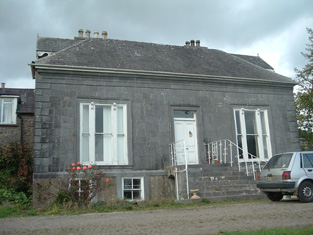
|
| Summerville (Cavan) | Another house located on the west shore of Lough Sheelin. In 1814 James H. Cottingham was the proprietor of Summerville, Mount Nugent. The house was unoccupied at the time of Griffith’s Valuation but in the possession of William Webb. It was valued at £15.10.0. for rates. It was much reduced in size by the time the 25 inch map was compiled. A building still occupies the site. | |
| Summerville/Corbally More | In 1848, Lord Fortescue was leasing this property to Thomas Dillon when it was valued at £38. In 1774, Smith refers to Somerville as the seat of Thomas Wyse. The National Inventory of Architectural Heritage indicates that the Scottish-Baronial style mansion now extant was built in the late 1870s. The property is labelled as Summerville on the 6-inch Ordnance Survey map but on the later 25-inch map the new house is labelled Corbally More. It was severely damaged by fire in the twentieth century but re-built and is still extant though now in poor repair. In 2015 it was offered for sale. |
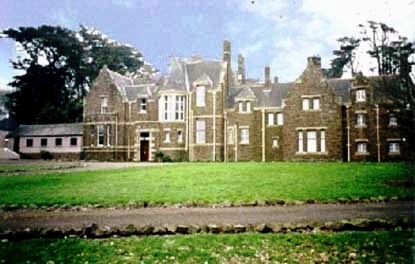
|
| Summerville/Thomastown | Home of Dominick G. Bodkin in 1814. The Bodkins intermarried with the Kilkellys. In 1855 the mansion house was described as 3 storeys high and in good repair. By the 1870s John Lyons of Summerville, Moylough, owned 218 acres in county Galway. In 1906 another source records Summerville, valued at £13.10 shillings, as occupied by John Lyons. Renovated in 2006 by its present owner Pat Lyons. |
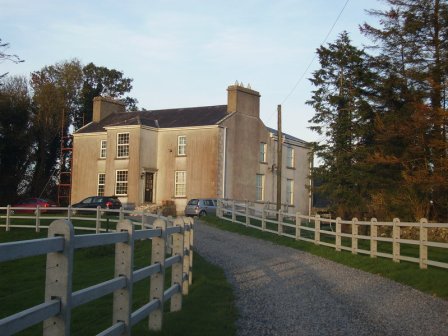
|
| Summerville/Villa Lodge | A house orginally built for a member of the Browne family, it was leased by the 2nd Marquess of Sligo to Courtney Kenny of Ballinrobe in 1830 and was used by the Kennys as a summer residence. Courtney Kenny leased the property to John Sidney Smith, agent to the Westport estate in 1855. The house was valued at £14 at this time. A drawing, map and 20th century accounts re this property are included in the Kenny Papers. |
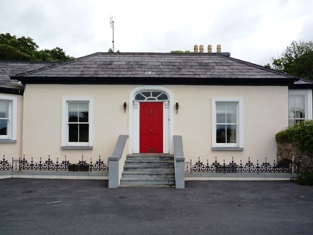
|
| Sun Lodge | Sun Lodge is marked on the first Ordnance Survey map and was occupied by Denis Hanan in the mid 19th century and held from Henry Peard. It was valued at £30+. Hanan's interest was advertised for sale in 1870. Hajba records various other occupants and this house is still occupied and well maintained. |

|
| Sun Lodge/Hoe Lodge | Sun Lodge was being leased by James Hallinane from the Poole estate in the 1850s when it was valued at £13 10s. Lewis refers to it as the seat of W. McCarty in 1837. It is labelled Hoe Lodge on the 25-inch Ordnance Survey map of the 1890s, the name by which it is still known. |

|
| Sunmount | George Beamish was leasing Sunmount to Rev. W. John Day at the time of Griffith's Valuation, when it was valued at £20 5s. Lewis refers to Ballyvackey as the seat of G. Beamish in 1837. In 1906 it was owned by William Hungerford and valued at £23. It is no longer extant. | |
| Sunning Hill | Richard Quinn was leasing this property to Amelia Quinn at the time of Griffith's Valuation, when it was valued at £18. Lewis refers to its as the seat of Mrs. Quinn in 1837.The original house is no longer extant. | |
| Sunny Hill | In 1786 Wilson refers to a seat of Mr. Cotter in the town of Mallow. James Delacour, second son of Robert Delacour of Beare Forest, was residing at Sunny Hill in the mid 19th century. He held the property from Henry Braddle and it was valued at £36. He was still described as "of Sunny Hill" in 1886. The house became a rectory for about fifty years in the 20th century. In 1942 the Irish Tourist Association Survey referred to it as "a fine well kept residence built by J. Carmichael". It is now a private residence named Duarrigle. | |
| Sunnyside | Richard Barrett occupied a house valued at £15 which he held in fee. Hajba writes that Charles H. Haines built this house named Sunnyside in 1862. He was leasing the townland from Richard Barrett. The National Inventory of Architectural Heritage dates the house circa 1820. The home of the Cashman family in the 20th century. |

|
| Sunville | This house was the residence of Captain Durdin in 1814 and of Major Kane in the early 1850s who held it with 2 acres from Michael Connor who was leasing from Thomas G. Durdin. The house was valued at £12.10 shillings. This house was included in the Durdin estate sale of June 1855. The ruins of this house and a walled garden are situated behind a modern house. | |
| Sunville | A property held from Francis Wise in the mid 19th century by Thomas Donovan. The buildings were valued at £15.10 shillings. In the 1870s Thomas Donovan of Sunville, Johnstown owned 174 acres in county Cork. | |
| Sunville | Sun-Ville, Pallas-Green was the residence of Thomas Apjohn at the end of the 18th century and of John Ryan esquire in 1814. In the early 1850s it was occupied by Thomas Kearney and held from Michael Apjohn. The buildings were valued at £33. Thomas Kearney was County Surveyor for the East Riding of county Limerick, 1837-1862 and for Limerick city 1852-1853. His daughter Olivia married in 1854 Michael Marshall Lloyd Apjohn of Linfield. see http://www.dia.ie/architects/view/2903. It is still extant. |

|
| Sunville | A residence of the Godsell family in the 18th century, it was still in the possession of James Godsill in 1814. Lewis writes that Sunville anciently belonged to the Godsall family but was "now" (1837) the residence of E. Sayers. Edward Sayers held it in fee at the time of Griffith's Valuation. Sunville/Sunvale was afterwards a residence of the Low family, being occupied in 1906 by Colonel John Low. Lithographs of this house and mill are included in the sale rental of 1853. The Irish Tourist Association surveyor wrote in 1943 that the house was owned by Mr John O'Donnell. He says that it was built in the early 18th century by the Cosby family from whom it passed to the Lowes. It is labelled Sunvale on the 25-inch Ordnance Survey map of the 1890s. The house is no longer extant. |

|
| Sunville | Occupied by T. Studdert in 1837 and by Robert Hanley at the time of Grifftith's Valuation who held the property from Thomas Prosser. Also known as Sion Ville. A building is still extant at the site. | |
| Sunville | Described as the seat of Thomas Wallnutt in the Ordnance Survey Field Name Book and built in 1821 for £900. It was occupied by Margaret Wallnutt in the early 1850s and held from William F. Taverner and valued at £24. | |
| Sunville (Kilbrittain) | James F. Sweeney was leasing this property from William B. Bernard's estate at the time of Griffith's Valuation, when it was valued at £10. It included Knockavortelig Mill which does not appear on the 25-inch map of the 1890s. A house still exists at the site. | |
| Surgeview | A house beside the sea on the Gamble estate. Arthur Gamble held the townland in fee at the time of Griffith's Valuation when the buildings were valued at £1 10s. There are modern houses in the area now. | |
| Surmount/Sirmount | Sirmount was the residence of Emmanuel Moor in 1750. In 1786 Wilson refers to it as the seat of Mr. Hawkes. This house was occupied by G. Hawkes in 1837 and by Quaile Hawkes in the early 1850s. The property was held from Lady Carbery. The buildings were valued at £8.15 shillings. It is no longer extant. | |
| Swilly Mount | Thomas Paterson was described as "of Plaister and Swillymount" in the ''Visitation of Ireland'', published in 1897. At the time of Griffiths Valuation in the 1850s, this property was leased by Mathew Mitchell from Anne Kilpatrick and had a valuation of £8. A more extensive property is visible on the 25-inch edition Ordnance Survey map of the early 1900s. Farm buildings are extant at the site. | |
| Swilly View | Francis Gallagher was leasing this property from the Hayes estate at the time of Griffiths Valuation in the 1850s, when it was valued at almost £13. The house at this site has been named Swilly View since at least the 1s edition Ordnance Survey map of the 1830s. It is still extant. | |
| Swinford | ||
| Swiss Cottage | A thatched house built in a wooded area early in the 19th century and "probably designed by John Nash" (Bence Jones p.53). In the mid 19th century it was valued at £9 and held by the Earl of Glengall in fee. A lithograph of this building is included in the Glengall sale rental of November 1853 and the Burmester, Law and Sadlier sale rental of November 1857. Now in use as a heritage centre. |
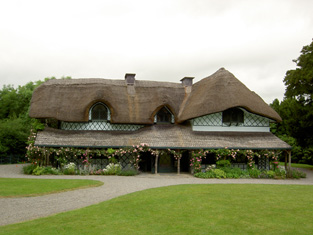
|
| Sycamorehill | At the time of Griffith's Valuation, Allan Pollok held a property at Sycamorehill, parish of Clonfert, valued at £16. Molloy states that this house was burned during land agitation on the Pollok estate in the 1850s but it was subsequently re-built. Sycamorehill is still extant and part of a large farm. |

|
| Sylaun | Descriptions indicate that Sylaun House, which was valued at £7 at the time of Griffith's Valuation, was a single storey, thatched structure. No trace now remains of the house though other estate architecture is visible. | |
| Synone | A house built in the second half of the 19th century, still extant and lived in. |
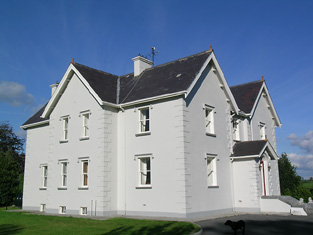
|
| Taghboy House | Built in the 1860s by the O'Rorkes and home to Mary O'Rorke for the rest of the 19th century. Valued at £9.5s in 1906. The last occupants were the Kelly family who were still in residence in the 1930s. | |
| Tallagh | At the time of Griffith's Valuation Denis Godley was leasing this house from the Clive estate, when it was valued at £10. Some farm buildings occupy the site. | |
| Tallagh Cottage | At the time of Griffith's Valuation the house was occupied by Anthony Wood, who held it from Andrew Caldwell. It is labelled Tallagh Cottage on the 25-inch edition Ordnance Survey map of the 1890s. This house is no longer extant. | |
| Tallyho Lodge | Tallyho Lodge was the home of Burton Persse, Sen, in the 19th century. The house is no longer extant but traces of the walled garden remain. |

|
| Tanavalla or Garrantanvally House | Alexander Elliott was leasing this property from William Monsell at the time of Griffith's Valuation, when it was valued at £22 10s. While it is labelled Garrantanavally House on the 1st editon Ordnance Survey map, it seems to have been generally known as Tanavalla House. Lewis states Tannavalla was the seat of A. Elliott in 1837. Bary states that the original house was destroyed by fire in the 1820s and rebuilt in Regency style. The Elliotts owned the property until at least the 1870s after which it was the occupied by the Cooke family. It was burned in 1920. |

|
| Tangier | Caleb Robertson is recorded as occupying the house known at the time of the first Ordnance Survey. He is noted as the immediate lessor at the time of Griffith's Valuation though the house was unocciped and valued at £28. Tangier House was occupied by Harward O'Farrell, a doctor, in the second half of the 19th century. His third son, Sir George Plunkett O'Farrell, was granted arms in 1909. A house is still extant at the site. | |
| Tankardstown Mine House | In 1851 John Petherick wsa leasing this property from Mrs. Barron's estate when it was valued at £9. A house still exists at the site. Petherick was the mine manager of the Tankardstown Copper Mine. |
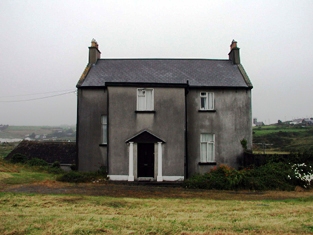
|

